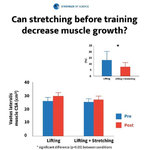Ælfric
New member
want to fill a couple of hours
I can understand your desire to do more exercise, but quantity is the enemy of quality, in two ways.
Over-training and Recovery
You do not get stronger in the gym, you get weaker. When you lift weights, you break down the muscle. You're doing micro damage to the muscle tissue, literally causing little tears in the muscle fibres.
You get stronger and, hopefully, bigger muscles by resting and repairing the damage after training. The process is called recovery. Unless you're genetically blessed (and probably using chemical assistance), it takes more than 24 hours to repair the damage. For some, 48 hours is adequate, for others, a week isn't long enough. As you age, the time needed to fully recover will usually get longer.
Too much training, and not enough recovery, leads to over-training, the result of which is is you stop progressing, or worse, start going backwards.
Dilution of Effort
Weight training is most effective when the muscles are being pushed hard. Muscles, above and beyond what you need to function on a day to day basis, are not a survival characteristic—they burn calories that in lean times shorten the time you can survive. This is one reason why you lost muscle when you lost weight—you're running a calorie deficit and your body will do whatever it can to reduce the calorie requirements, which means get rid of muscle.
To get the body to create new muscle, you have to convince it that the muscle is required for your survival. You do that by pushing the muscles you have to, or very close to, their limit. If you do lots of exercise with relatively light weights, you'll increase the muscle's endurance, but not it's strength. Think about walking as an extreme example: you take thousands of steps (reps) every day, but your legs get no stronger.
To provide a stimulus to grow, you need to lift a weight that is close to the maximum you can lift. In a perfect world, you'd lift 100% of your maximum possible lift for one rep. In a more realistic world, you might lift 94% of your maximum for five reps, or 75% for 20 reps, or some other scheme where you trade off weight for repetitions. But you don't want to have too many repetitions, or you reduce the weight to the point where you don't push the muscles hard enough to trigger growth.
How many reps is ideal varies from person to person, and from msucle group to muscle group, but 15–25 would be a good starting point. This is per muscle group, not per exercise.







